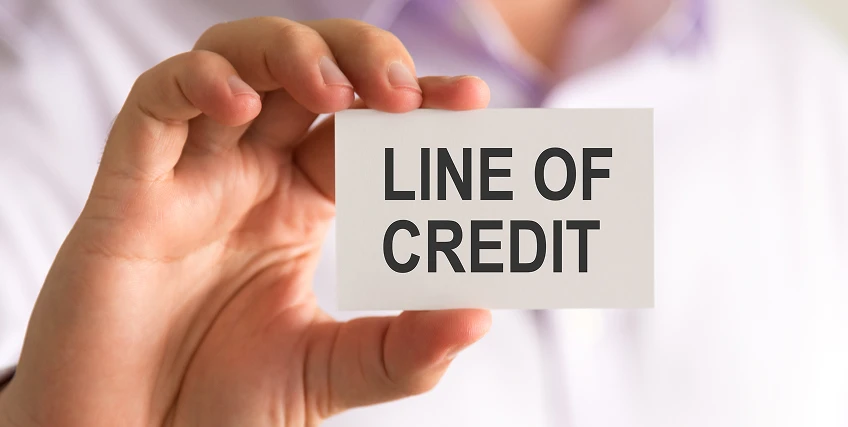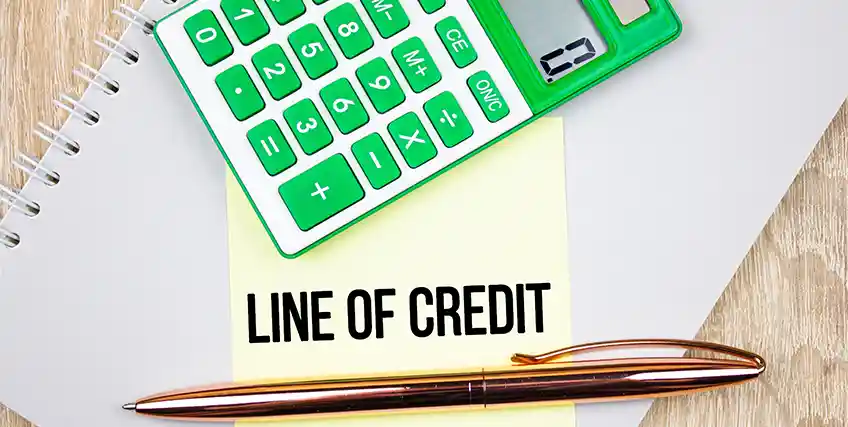What’s the Difference Between Revolving Credit and Non-Revolving Credit?
March 16, 2025 | Last Updated on: March 16, 2025

Business owners often need flexible financing options to help them run their business. A revolving line of credit and credit cards allow your small business to borrow up to your credit limit as you need it and then repay as you can. Learn more about revolving debt, how it compares to non-revolving credit, and when to use each for your business.
Understanding Revolving Credit vs. Non-Revolving Credit
Your small business may need to borrow money to complete a project, buy inventory or equipment, or cover payroll. When exploring financing options, two terms you might encounter are: revolving and non-revolving credit.
It’s important to understand the difference between the two types of credit to identify which type of credit you may be qualified for and which is best for your unique situation.
What is a Revolving Line of Credit, and How Does it Work?
Revolving credit is credit that your small business can keep using (or revolving) each month. These accounts have a defined credit limit or spending power, which dictates the maximum amount you can carry. As you make purchases or draws against your line of credit, your balance grows. Unlike a traditional bank loan, you will only be charged interest on the amount you borrow.
Monthly payments are typically the accrued interest on your balance or a small percentage of your total balance. For some business credit cards, you may be required to pay the balance in full each month. If you are allowed to carry a balance forward, that balance accrues interest until you pay it off. You are typically permitted to pay off the entire balance whenever you want without penalty.
As you pay down your balance, your available credit for future purchases or draws increases. Your line of credit may renew indefinitely or have a defined draw period before it converts into an amortizing loan.
Business Line of Credit vs. Credit Card
When exploring revolving line of credit options to finance your small business, you may choose between a line of credit or a credit card. While both offer flexible financing and low monthly payments, there are distinct differences between them.
Business Credit Card
Business credit cards are a great way to manage expenses for your business. Not only do they allow you to make purchases up to your credit limit, but many also provide lucrative rewards and benefits.
A downside when comparing a line of credit vs. a credit card is that business credit card limits are often much lower than a revolving line of credit. It is uncommon for small business credit cards to have a credit line higher than $50,000 to $100,000, while a line of credit can be much higher.
While credit cards offer a grace period if you pay the balance in full each month, their interest rates can be quite high if you carry a balance. Business credit cards may not have the same consumer protections you receive on your personal credit cards. For example, the bank could unexpectedly change your APR or charge higher-than-normal late fees.
Business Line of Credit
An alternative to a business credit card is a revolving line of credit. With a business line of credit, you can draw money as you need it. Instead of purchasing with a physical card, you'll access your credit limit by writing a check or transferring money into your linked bank account.
Unlike a business credit card, there doesn't have to be a specific purchase when accessing your credit limit. You can typically get the money at any time for any reason and then use it for your business however you see fit.
Business lines of credit typically have credit limits of up to $100,000, although larger businesses may be able to get higher limits. Be careful with how much you spend on your line of credit because lenders are typically entitled to “call” a line of credit whenever they want. If this happens, you can no longer access your credit limit and must repay the balance immediately. Lenders may also reduce your credit limit at any time.
What is Non-Revolving Credit?
Non-revolving credit is different from revolving credit because it doesn’t “revolve” from month to month. It is an installment loan that does not allow further draws without applying for another loan.
On the personal side, examples of non-revolving credit loans are home mortgages, student loans, personal loans, and car loans. In the business world, you may use a non-revolving credit line to purchase equipment, buy a building, or get working capital to fund operations.
With non-revolving credit, you'll borrow a set amount at interest rates set by the issuer. The lender may adjust the interest rate based on the term of the loan, your personal and business credit scores, and how much you borrow. These loans typically offer a fixed interest rate with a constant payment amount. However, some loans may have different repayment terms.
Since non-revolving credit offers a fixed payment schedule, you will know how much your payment is each month. This makes it easier to budget, and you'll know when the loan will be paid off. You can make extra payments or pay off the entire balance early, but some lenders may charge prepayment penalties. Be careful when making extra payments since you'll need to apply for another loan in order to take out additional funds.
What’s the Difference Between Revolving and Non-Revolving Credit?
A business revolving line of credit and non-revolving credit are both useful to business owners with different financing needs. However, there are distinct differences between them that make them ideal in different situations.
- Borrowing Limits: Non-revolving debt limits are usually higher since they are funded once and are repaid on a fixed schedule. Revolving lines of credit and business credit cards have lower limits since the credit can be used for any purpose and typically doesn't have an asset backing the debt.
- Interest Rates: Revolving lines of credit typically offer variable interest rates that change based on Federal Reserve decisions. Non-revolving credit usually has a fixed rate through the life of the loan.
- Interest Charges: With non-revolving credit, the lender charges interest on the entire balance, and interest charges decrease as the balance is repaid. When you use revolving credit, you only pay interest on the amount you draw. Interest charges are based on your balance and current interest rates.
- Monthly Payment: Lines of credit usually offer interest-only minimum payments during the draw period. Payments on non-revolving credit are set when the loan is originated, including a combination of principal and interest. As the loan is repaid, interest charges decrease, and more of the payment goes toward reducing the balance.
- Prepayment Penalties: Some non-revolving credit lines charge prepayment penalties if you pay off the loan early. Small business owners can make extra payments on a revolving line of credit to reduce their balance or pay off the entire debt at any time without any penalties.
Final Thoughts
Smart use of debt can benefit your business and help you reach your goals. Many business owners use a combination of revolving lines of credit and non-revolving loans based on their needs. A line of credit is flexible, can be used repeatedly, and charges interest based only on what you use. Non-revolving loans provide a lump sum of cash, a fixed payment schedule, and a defined term for repayment. Learn more about how small business finance products work and which loan products are best for your small business.
FAQs about Revolving Line of Credit
When Should Your Business Use a Revolving Credit Line?
If you often need fast access to cash for your business, a revolving credit line may be a good fit. With a line of credit, you don’t need to apply for credit each time you want to use it. This financing option is excellent for short-term borrowing to complete a project, buy inventory, cover unexpected expenses, or while waiting on customer payments.
When Should Your Business Use a Non-Revolving Credit Line?
A non-revolving credit line may be the best fit when you have a predictable project budget. Non-revolving credit lines come with lower interest rates and predictable repayment schedules. With a term loan, you'll make monthly payments for a defined period of time until your outstanding balance reaches zero. However, you must apply for another loan if you need additional money.
What Are the Disadvantages of a Revolving Line of Credit?
The main disadvantages of a revolving line of credit are the risks of interest rate increases and the impact on your credit bureau. Since a line of credit has a variable interest rate, your payments may become unaffordable as interest rates rise. If your balance gets too close to your credit limit, your credit score could suffer due to a high credit utilization ratio.
Is Revolving Credit Good or Bad?
A revolving line of credit is a good financing option for small business owners who want flexible financing and low monthly payments for their cash flow. Its interest-only payments are typically more affordable because they are lower than a term loan. Additionally, you can re-use the credit limit repeatedly as you pay down your balance.
Frequent searches leading to this page
Non-revolving line of credit, line of credit vs credit card, what is a revolving line of credit, revolving credit loan




